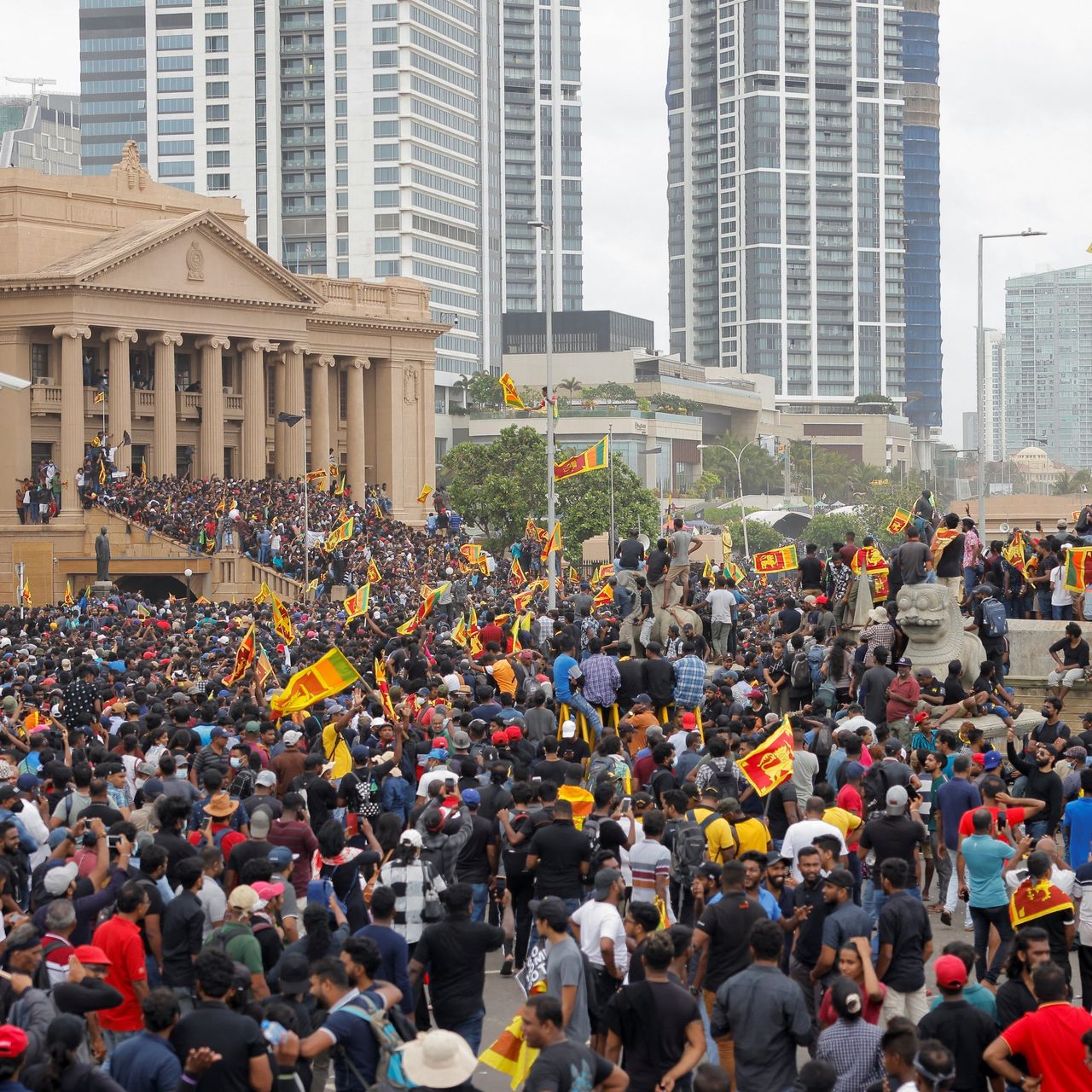by DEVAKA GUNAWARDENA, NIYANTHINI KADIRGAMAR, & AHILAN KADIRGAMAN

Debt, austerity, and inequality in Sri Lanka’s historic crisis
Massive demonstrations that swept Sri Lanka last year exposed the serious challenges at the heart of the global economy. In July 2022, former President Gotabaya Rajapaksa was forced to flee the country, only a few months after announcing a hasty default of Sri Lanka’s foreign debt obligations. He faced a wall of opposition as the nation suffered infamous kilometers-long fuel queues, power outages, and food and medicinal shortages, crippling everyday life.
In the months since, the current government led by Ranil Wickremesinghe—allied with the party of the disgraced Rajapaksa family—has appeared savvier than its predecessor, implementing a quota system to manage fuel distribution and end the queues. However, the government has also tripled fuel prices, which has severely dampened demand. Fuel consumption is half of what it was a year ago, bringing economic activity to a grinding halt. Inflation has skyrocketed, with food inflation peaking at 94 percent in September 2022. A quarter of Sri Lankans are facing severe food insecurity; household incomes across the board have decreased. The Central Bank dramatically doubled interest rates, making access to credit for economic activity extraordinarily difficult. Rural livelihoods have been disrupted. Many small businesses are collapsing.
The country’s default and its remaining pathways forward reveal the fault lines of a messy and intractable process. While the most visible aspects of the crisis that captured the attention of news media last year may have disappeared, the ongoing breakdown points to fundamental flaws in the global economy. These include the lack of a credible mechanism for resolving debt crises in peripheral countries like Sri Lanka, along with the possibility of a lost decade, if not longer, for development in many parts of the world.
Sri Lanka is already experiencing the unsustainable consequences of an International Monetary Fund (IMF) policy package, though it is yet to receive even the first infusion of IMF funds under a promised agreement of USD 2.9 billion, reached in September 2022. The IMF has demanded that Sri Lanka first obtain assurances from bilateral and private creditors, in addition to developing concrete plans to achieve a primary surplus by 2025 to conform with the IMF’s Debt Sustainability Analysis.
The problems associated with the IMF’s policy package have been caught in geopolitical rhetoric. The US alleges that Sri Lanka is the victim of a Chinese debt trap. In fact, Sri Lanka is in an IMF trap. The structural consequences of over four decades of neoliberal policies have exploded into view with the receding welfare state, a ballooning import bill, and investment in infrastructure without returns, all of which relied on inflows of speculative capital. Framing Sri Lanka’s crisis within a narrative of geopolitical competition obscures the core dilemmas of the global economy. Will the evident breakdown force a reckoning with the present order, or will it be used as an excuse to inflict more suffering?
Foreshadowing the crisis
The current predicament seems to anticipate a wave of sovereign defaults with consequences as profound as the Latin American debt crisis of the 1980s. That moment signaled the beginning of “structural adjustment” as part of bailout agreements for countries in the periphery. The Bretton Woods institutions—the IMF and World Bank—originated in the aftermath of World War II as part of an attempt to coordinate global efforts to avoid another systemic breakdown. Intensifying debt crises in the 1980s forced a response from the US, which steered the creation of the Brady Plan to help Latin American countries undertake debt swaps. Bailouts from the IMF, however, came with strict fiscal conditionalities, complementing neoliberal policies in the core countries.
Phenomenal World for more
